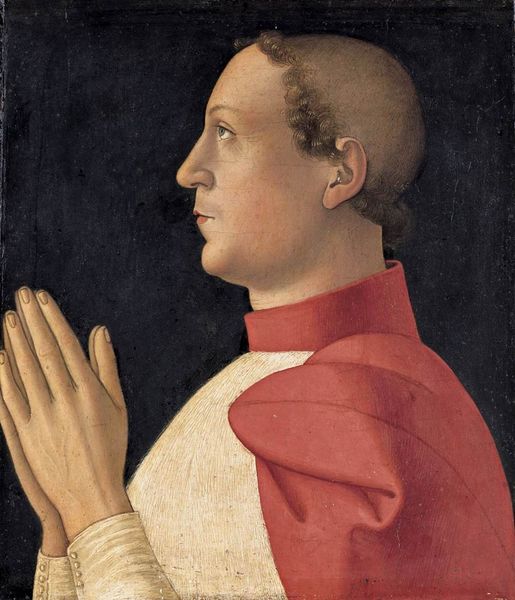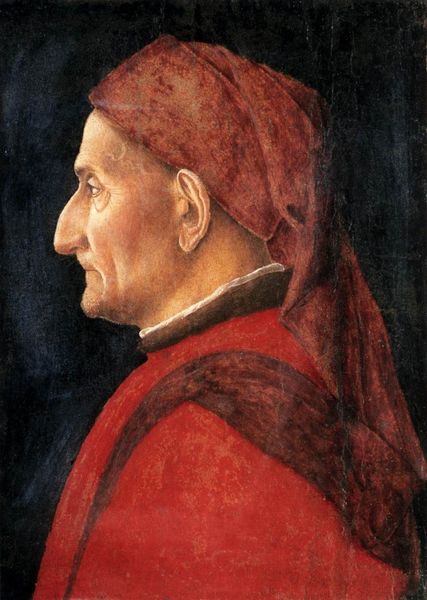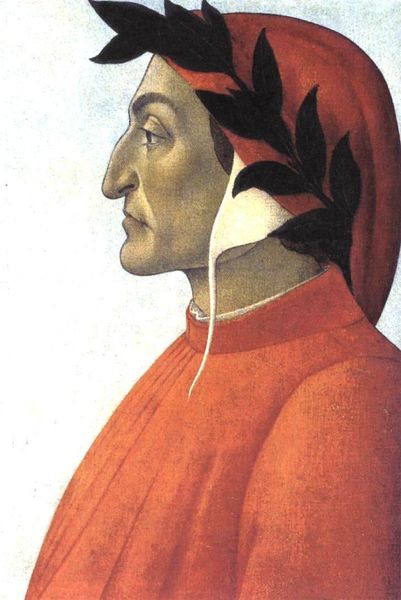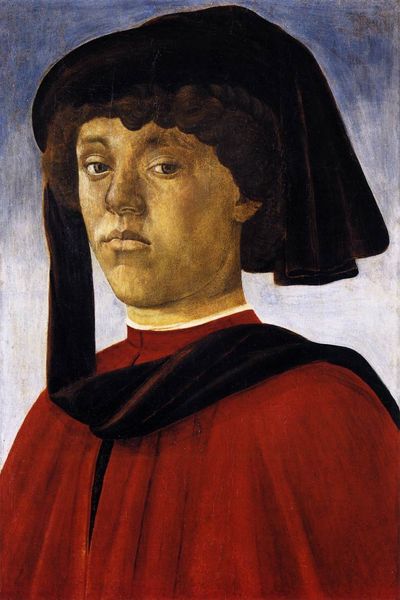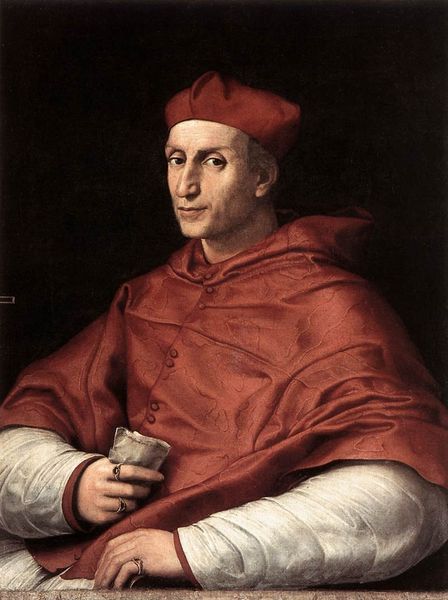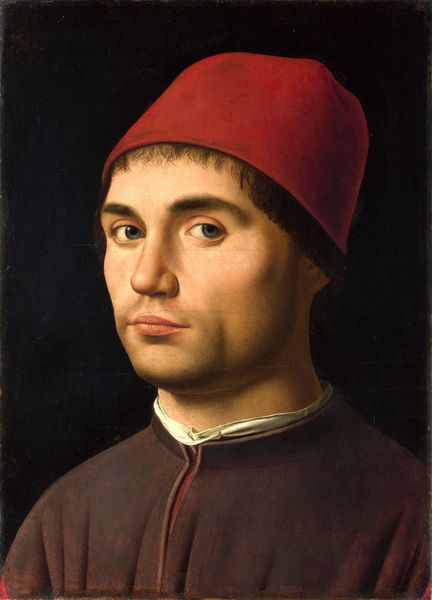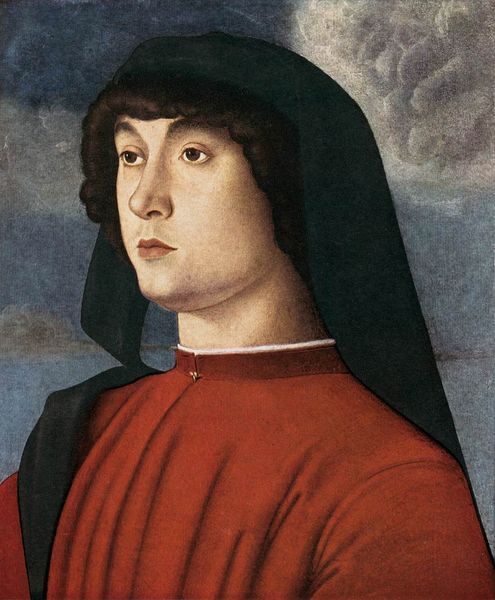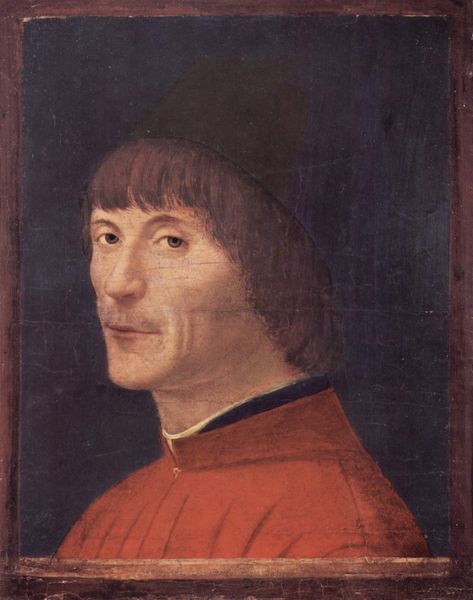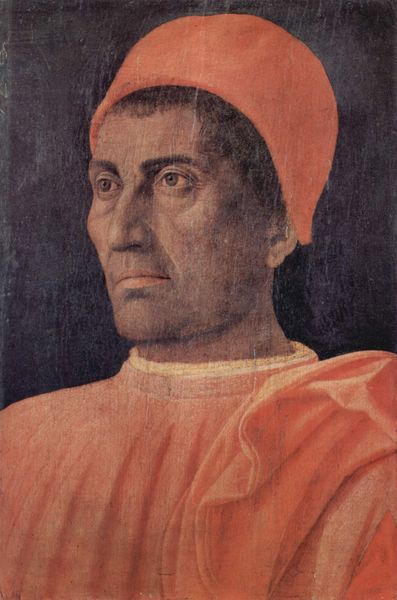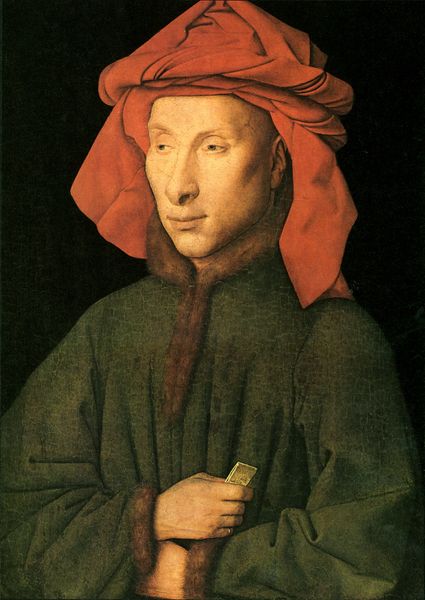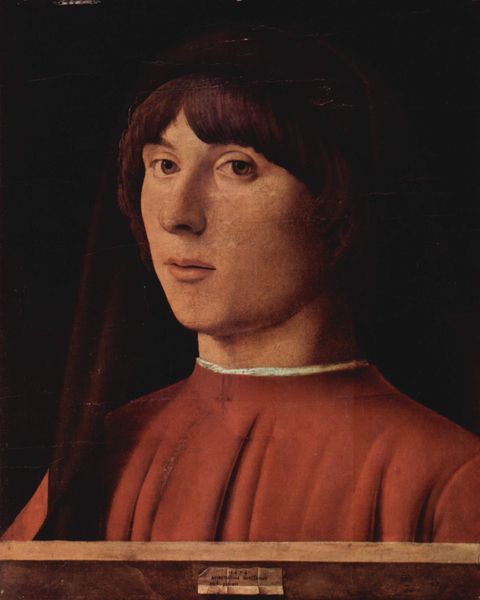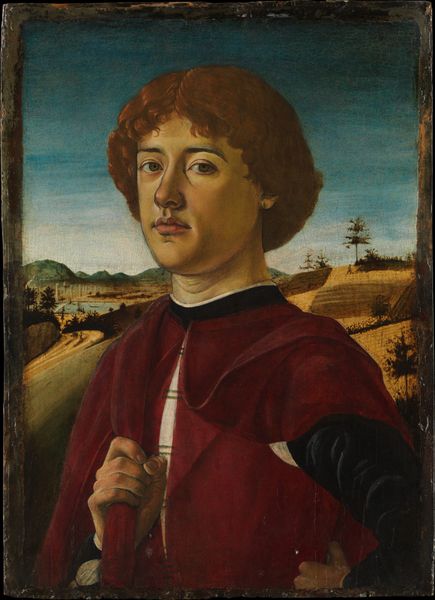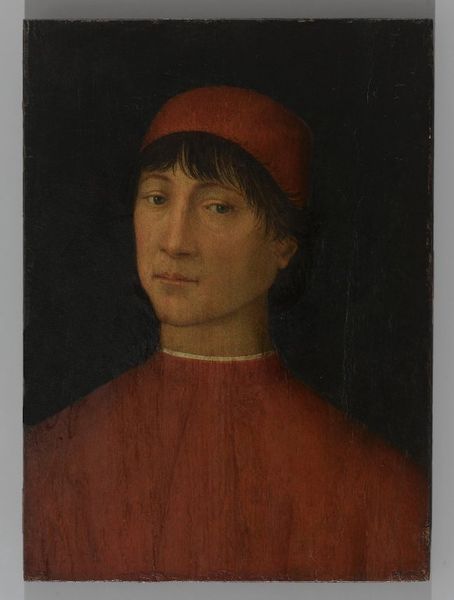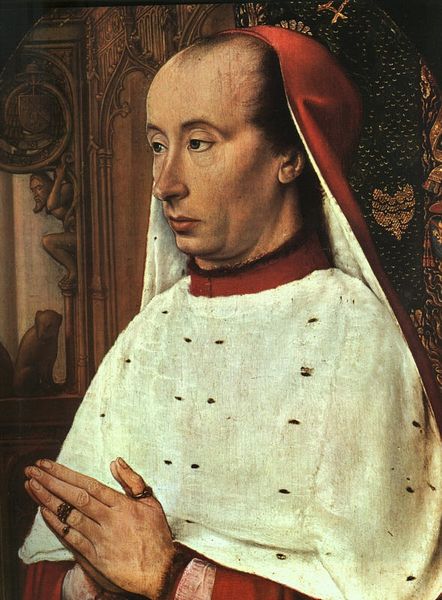
painting, oil-paint
#
portrait
#
high-renaissance
#
painting
#
oil-paint
#
figuration
#
11_renaissance
#
academic-art
#
italian-renaissance
Dimensions: 79 x 61 cm
Copyright: Public domain
Curator: Here we have Raphael's "Portrait of a Cardinal," executed around 1510 using oil paint. It is now housed at the Museo del Prado. Editor: He seems... inscrutable. The somber palette, that steady gaze—he’s radiating authority, but also, perhaps, a quiet melancholy. Curator: Absolutely. The sitter's identity remains a subject of some debate. What interests me is how the portrait conforms to and departs from established modes of depicting powerful clergymen. We see the classic High Renaissance pyramidal composition and emphasis on naturalism. Editor: Yet, it feels surprisingly intimate for a depiction of such a high-ranking figure. Look at the detail in the fabric, each crease lovingly rendered, contrasting sharply with the stark, featureless background. There’s an almost tactile quality. Curator: That's the genius of Raphael, isn't it? Balancing the public persona with hints of interiority. Notice the light catching the silk moiré of his mozzetta. He uses the details to subtly communicate status. Consider the political context too. The Church was a major powerbroker. Editor: Yes, and this work prompts interesting questions around visibility, power, and the individual within an institution. How did someone of this stature want to be seen? It raises complex considerations of identity and social constructs. Curator: And who controlled those depictions? Portraits of powerful people served very clear propaganda functions, so understanding how portraits like this functioned at the time deepens the understanding of those systems of power. Editor: Seeing this portrait through the lens of power, representation, and the construction of identity offers insight beyond mere aesthetic appreciation. It invites conversations about who gets to be seen and how. Curator: Indeed. The artwork provides a keyhole to a specific socio-political moment. Editor: Ultimately, the enduring power of "Portrait of a Cardinal" lies in its ability to invite reflection and open avenues to new discourses about the complex nature of identity in art.
Comments
No comments
Be the first to comment and join the conversation on the ultimate creative platform.
